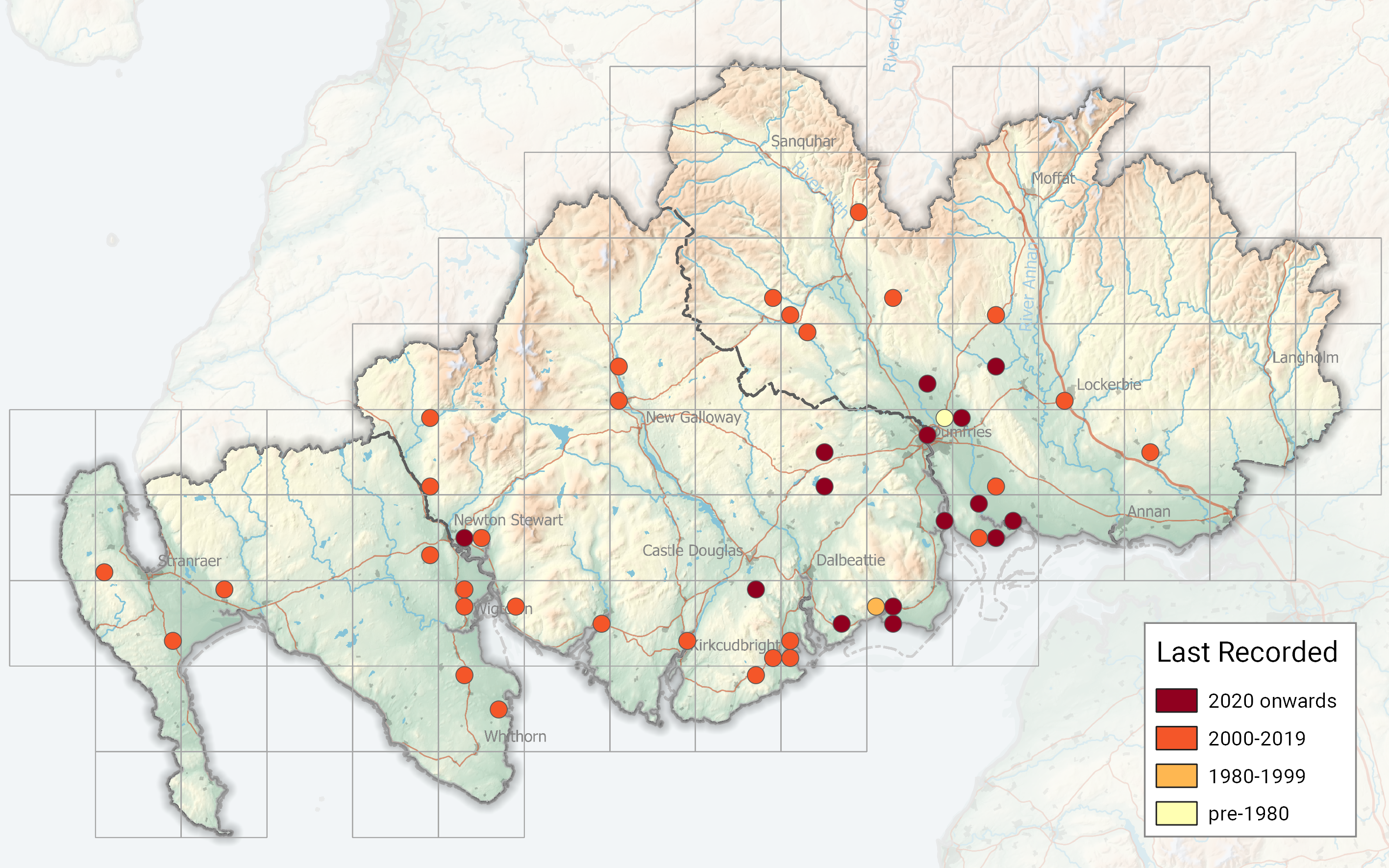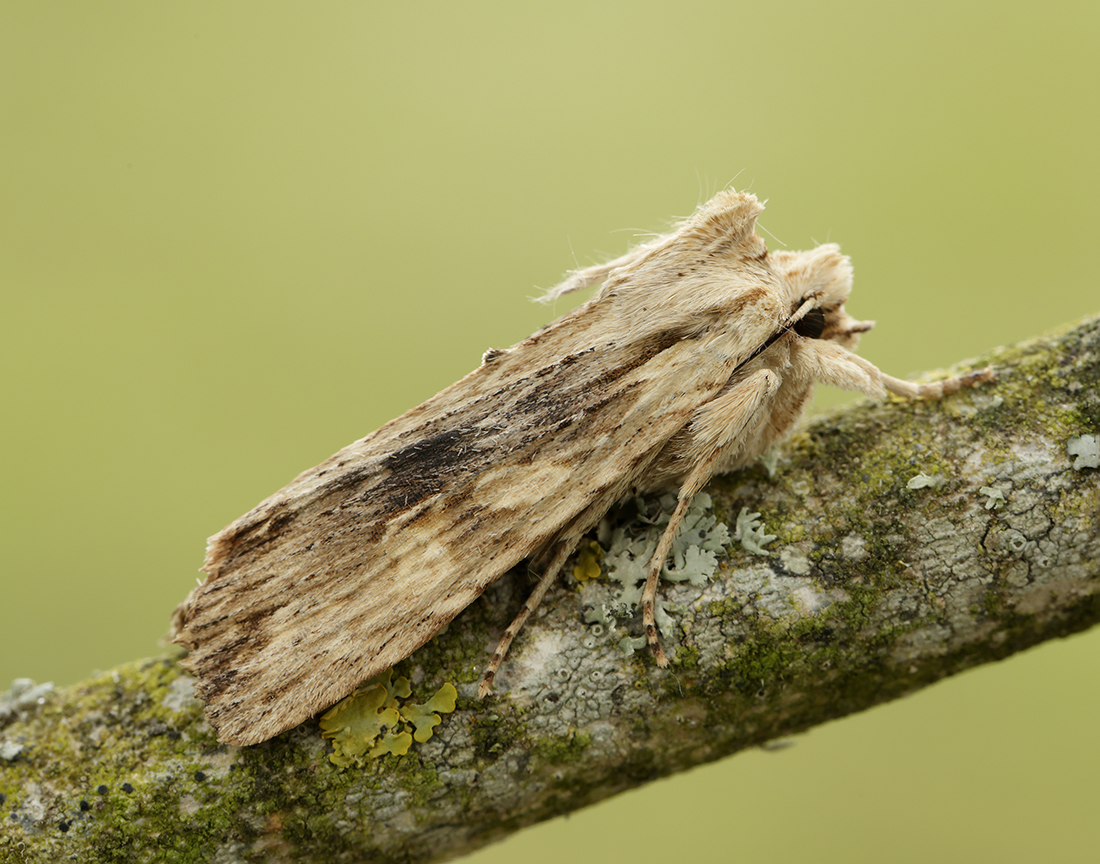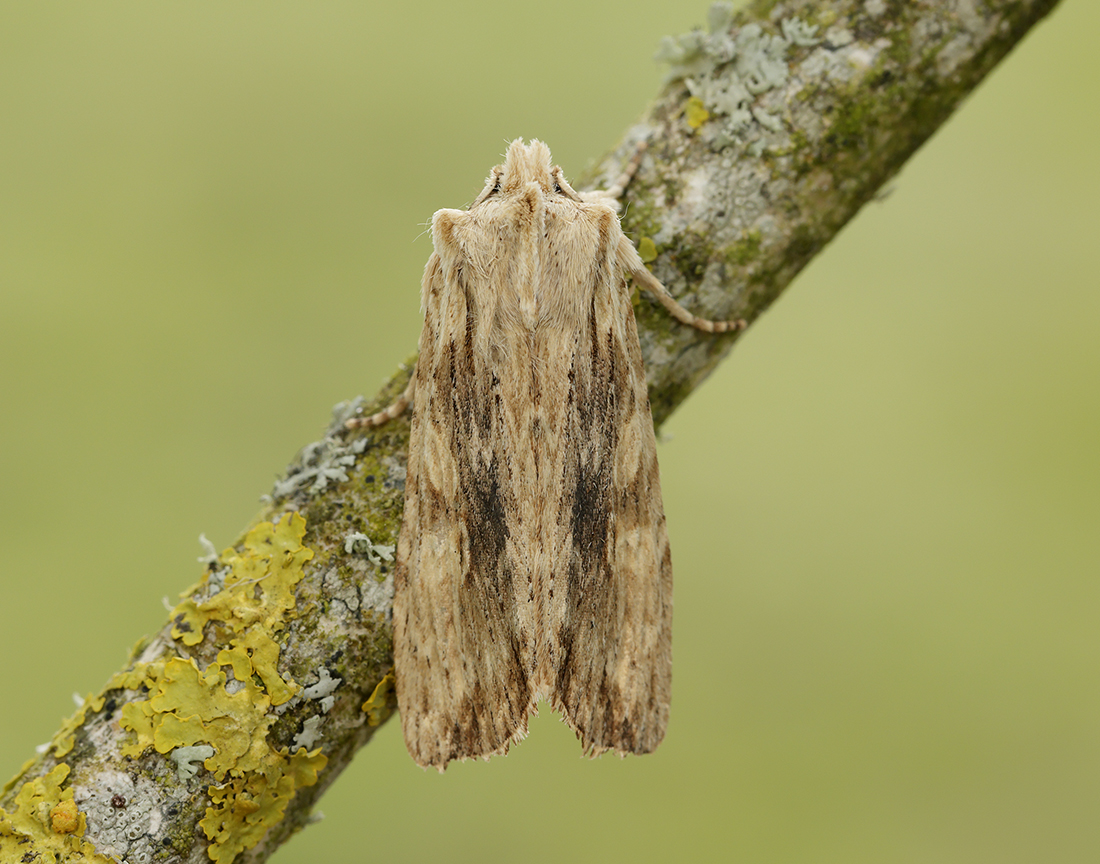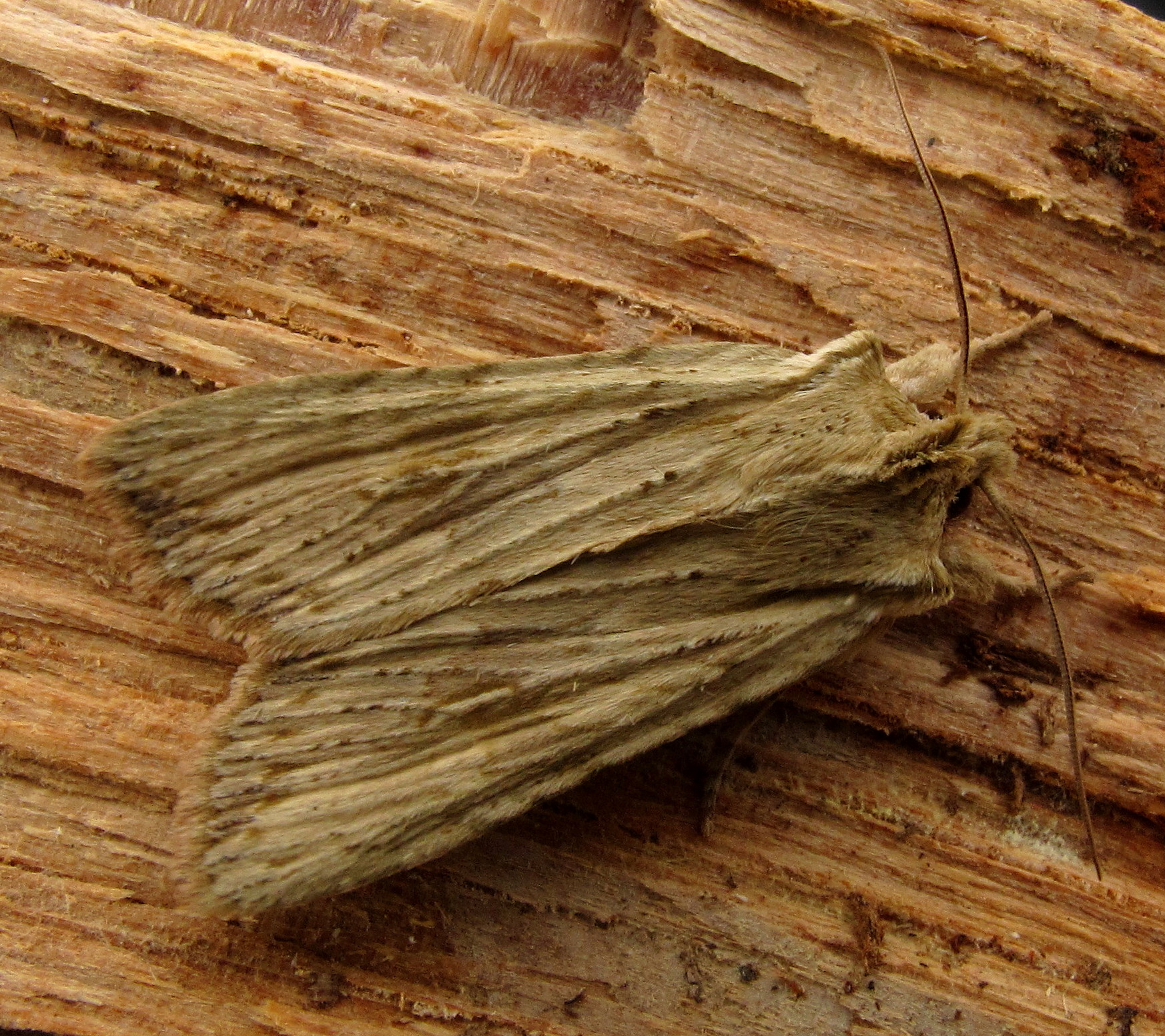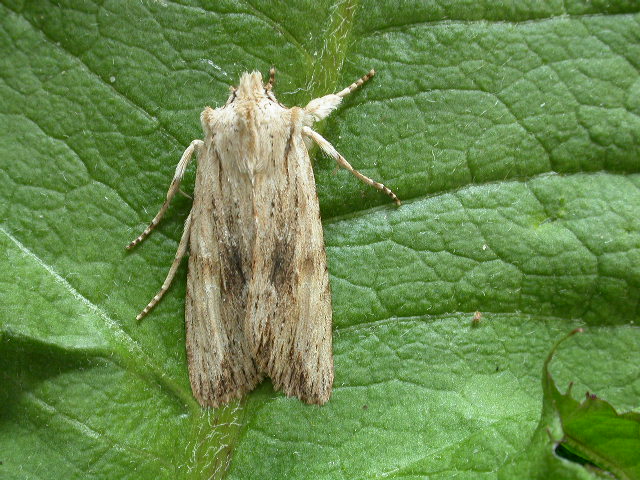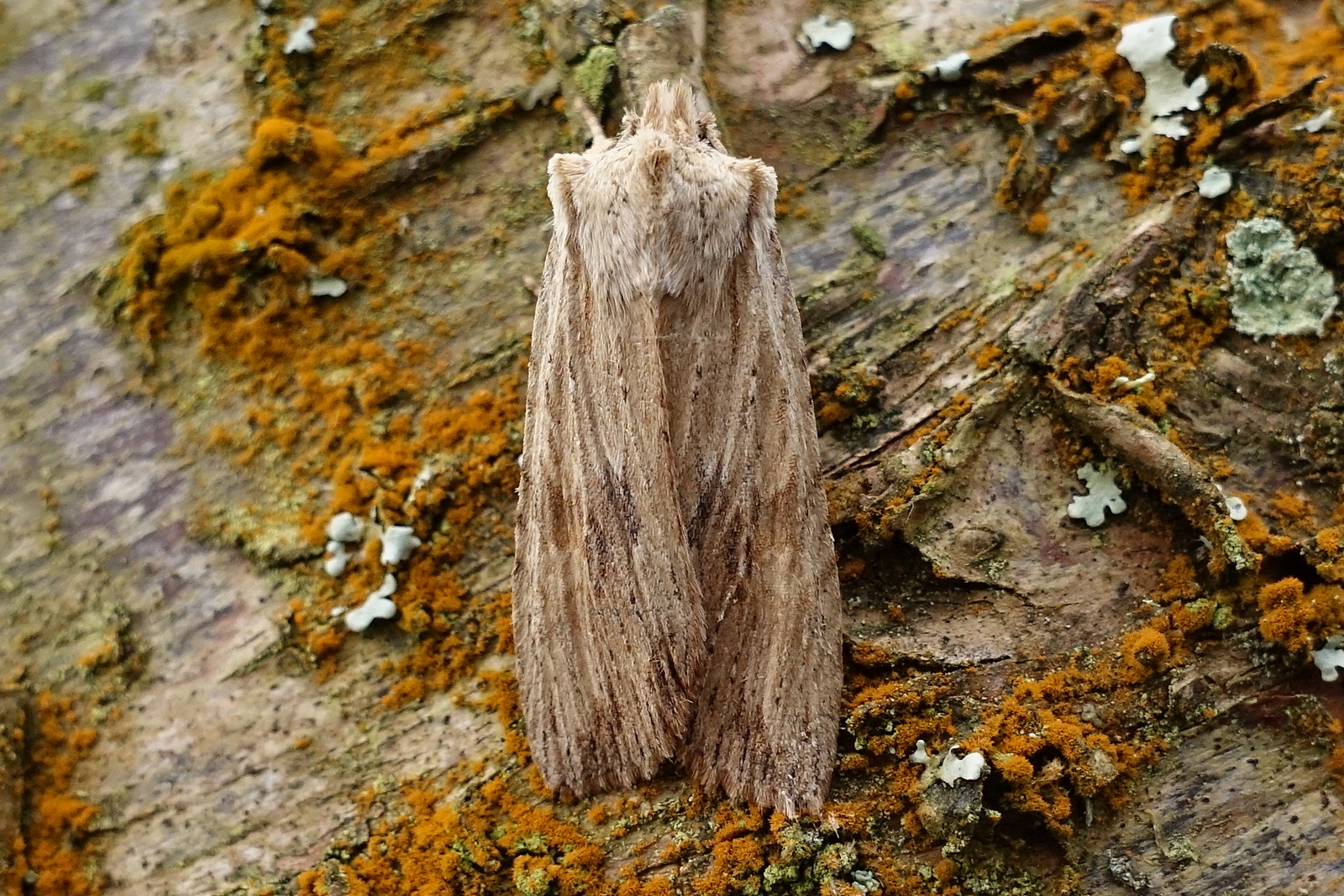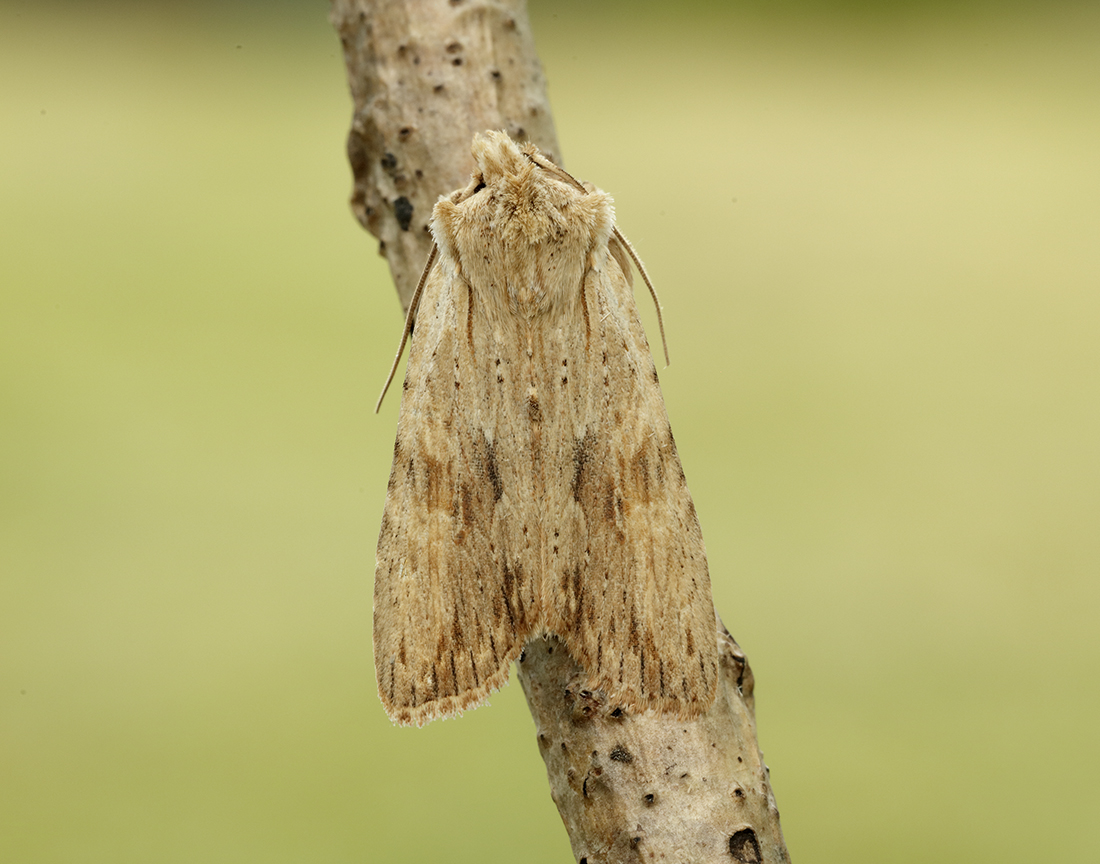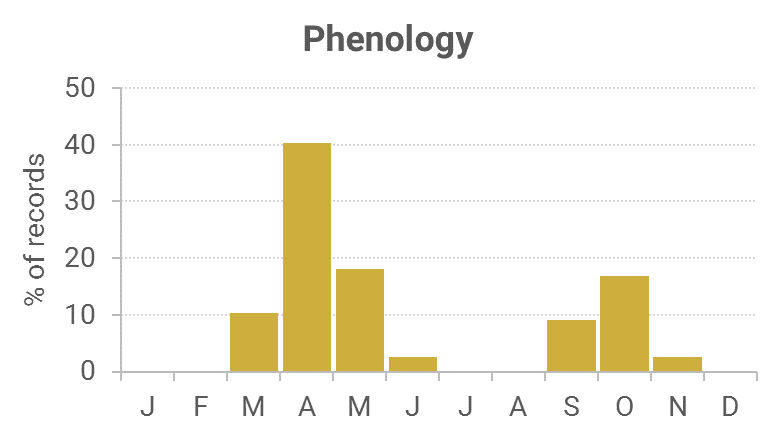Identification
Care required to separate from Tawny Pinion. As its name suggests the forewing is paler and slightly more curved than Tawny Pinion, with two small brown elliptical marks near the trailing corner, which should separate it.
Recording Method.
Attracted to light in small numbers, also comes to sugar and flowers.
Life cycle
One generation late autumn, reappearing in the spring. Overwinters as an adult in a sheltered location. Larvae are present May to July, pupating about a month later from a underground cocoon.
Larval foodplants
Its larval foodplants are various trees and shrubs, including oaks, birches and willows, but ash, the larval foodplant of the Tawny Pinion, is not recorded.
Habitat
Broadleaved woodland.
History
Lennon (1863) had stated that it was rare, but that it had occurred at Dalscone (VC72), where he had also found the Tawny Pinion. It was not until 24 September 1996 that it was trapped by Dennis Garret on the Southwick Coast SWT reserve.
During 1997-2000 it was trapped annually at Cally Woods, and from then to 2010 was recorded twenty-five times, with a few from Carsluith, Carsfad at Dalry, Old Torr, Kirkton and Forest Moor.

